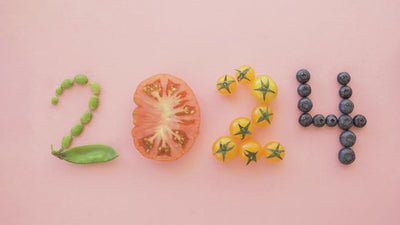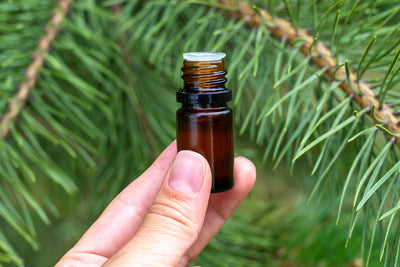From Farm-to-Fork: The Lifecycle of a Vanilla Pod 🌱
Welcome to the enchanting world of vanilla pod farming, where the air is sweet, the vines are lush, and the rewards are aromatic treasures! Vanilla, the queen of spices, has a fascinating journey from farm to table.
Let's dive into the magical process of cultivating this beloved flavour, uncovering the secrets behind those precious pods that enhance our desserts, perfumes, and more...
The Origins of Vanilla 📜 
Vanilla comes from the Vanilla planifolia orchid, native to Mexico. The Aztecs first introduced vanilla to Europe in the 16th century, captivating the taste buds of the world.
Today, vanilla is primarily grown in Madagascar, Indonesia, and regions of the Pacific Islands. The farming process is meticulous and labor-intensive, but the result is worth every effort.
The Lifecycle of a Vanilla Pod
1. Planting the Vine 👨🌾
Vanilla vines thrive in tropical climates with rich, loamy soil. Farmers typically start with cuttings from mature vanilla plants, planting them near trees or trellises for support.
These vines can grow up to 30 feet long, winding their way up and around their hosts.
2. Pollination – The Delicate Dance 🌞
Here’s where vanilla farming gets really interesting!
Vanilla flowers are hermaphroditic, meaning they contain both male and female reproductive organs, but self-pollination is rare. In their native habitat, the Melipona bee handles pollination. However, outside Mexico, hand-pollination is essential. This intricate process involves transferring pollen from the male part of the flower to the female part using a small stick or needle.
Timing is crucial – flowers bloom for just one day!
3. The Waiting Game 🌱
Once pollinated, the flowers develop into green pods. These pods take about 9 months to mature, gradually turning yellow at the tips when they’re ready for harvest.
Patience is a virtue in vanilla farming, as the best flavours develop slowly over time.
4. Harvesting and Curing 🌼
Harvesting vanilla pods is a precise art. Farmers pick the pods just as they begin to yellow, ensuring they contain the highest concentration of vanillin, the compound responsible for vanilla’s signature flavour. After harvesting, the pods undergo a curing process that includes:
- Blanching: Quickly dipping the pods in hot water to stop the maturation process.
- Sweating: Placing the pods in a wooden box to sweat for 36-48 hours, which kickstarts the curing process.
- Drying: Spreading the pods out in the sun during the day and storing them in airtight containers at night, a process that can take up to a month.
- Conditioning: Aging the dried pods for several months to develop their full flavour profile.
5. The Final Product 🚜
Once cured, the vanilla pods are dark, shrivelled, and filled with tiny, fragrant seeds. These precious pods are then sorted, graded, and packaged for sale, ready to add their intoxicating aroma to a myriad of culinary delights.
The Challenges and Rewards of Vanilla Farming 🎁
Vanilla farming is not for the faint of heart. It requires meticulous care, precision, and a deep understanding of the plant's needs. The hand-pollination process alone is enough to deter many would-be farmers.
Yet, those who persevere are rewarded with one of the most sought-after spices in the world.
Economic Impact 💸
Vanilla is a high-value crop, and for many farmers in Madagascar and other growing regions, it provides a significant source of income.
The global demand for natural vanilla has risen, leading to both opportunities and challenges for farmers who must navigate price volatility and the pressures of maintaining high-quality production.
Environmental Considerations 🌏
Vanilla farming can be environmentally sustainable. The vines grow well under the canopy of existing forests, allowing farmers to maintain biodiverse ecosystems. Sustainable practices, such as organic farming and fair trade certification, are becoming more prevalent, ensuring that vanilla production benefits both people and the planet.
Fun Facts About Vanilla 🤯 
- Vanilla is the only edible fruit of the orchid family, the largest family of flowering plants in the world.
- It takes about five years from planting a vanilla vine to producing marketable pods.
- Vanilla is the second most expensive spice after saffron due to the labour-intensive process required to grow and harvest it.
- The flavour profile of vanilla can vary significantly based on its origin, with Madagascar vanilla being known for its rich, creamy flavour, while Tahitian vanilla is more floral and fruity.
Vanilla pod farming is a beautiful blend of science, art, and nature. It's a testament to the dedication of farmers who transform delicate orchid flowers into the aromatic pods that enhance our lives.
The next time you enjoy a scoop of vanilla ice cream or a dash of vanilla in your coffee, take a moment to appreciate the incredible journey from vine to vanilla!




